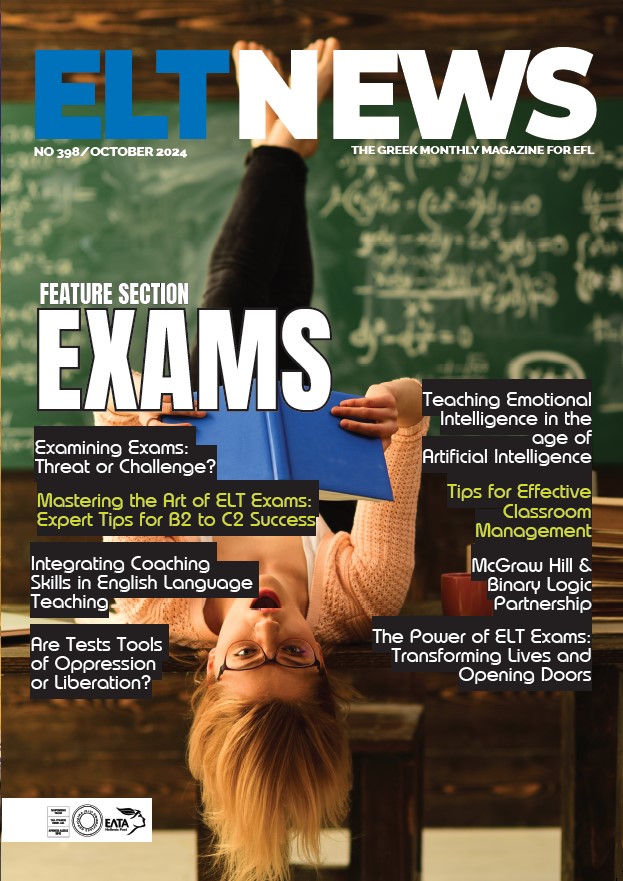In the ever-evolving landscape of English Language Teaching (ELT), standardized exams have become cornerstones of assessment and qualification. From TOEFL and IELTS to Cambridge exams and others, these tests play a crucial role in shaping the futures of millions of English language learners worldwide. However, as their influence grows, so does the debate surrounding their efficacy and impact on education. This editorial explores the multifaceted nature of ELT exams, weighing their benefits against their drawbacks.
The Positive Side of the Coin
ELT exams offer several undeniable advantages that have cemented their place in language education. First and foremost, they provide a standardized measure of language proficiency. In a world where English skills open doors to academic and professional opportunities, these exams offer a universally recognized benchmark. Universities and employers worldwide rely on test scores to gauge an applicant's ability to function in an English-speaking environment.
Furthermore, the existence of these exams serves as a strong motivator for students. The prospect of achieving a high score can drive learners to dedicate more time and effort to improving their language skills. This motivation often extends beyond the exam itself, fostering an enthusiasm for language learning that can last a lifetime.
For teachers and educational institutions, ELT exams provide valuable feedback on the effectiveness of their teaching methods. By analyzing test results, educators can identify areas where students consistently struggle, allowing them to refine their curriculum and teaching approaches. This data-driven improvement cycle can lead to more effective language instruction overall.
Additionally, exam preparation often involves developing critical thinking and problem-solving skills that are valuable beyond language learning. Many ELT exams now incorporate tasks simulating real-world scenarios, helping students prepare for practical language use in academic and professional settings.
The Flip Side: Concerns and Criticisms
Despite these benefits, ELT exams are not without their critics. One of the most significant concerns is the phenomenon known as “teaching to the test.” When exam results become the primary focus, language education risks becoming narrowly focused on test preparation rather than fostering genuine language acquisition and communication skills. This can lead to a superficial understanding of the language, where students excel at exam techniques but struggle with real-world language use.
The pressure associated with high-stakes exams can also negatively affect students' mental health. Test anxiety is a well-documented issue, and for many language learners, the stress of preparing for and taking ELT exams can be overwhelming. This pressure is particularly acute for those whose academic or career prospects depend on achieving a specific score.
Another concern is the potential cultural bias present in many ELT exams. Critics argue that these tests often reflect Western cultural norms and contexts, potentially disadvantaging students from other cultural backgrounds. This bias can appear in the content of reading passages, the topics of speaking tasks, or even in the very structure of the exams.
Moreover, the emphasis on standardized testing has led to a booming test preparation industry. While this has created jobs and resources for language learners, it has also raised concerns about equity. Students with access to expensive preparation courses and materials may have an advantage, potentially undermining the exams’ role as a fair measure of language ability.
Finally, there is ongoing debate about whether these exams truly reflect a learner’s ability to use English effectively in real-world situations. The controlled environment of a test center is vastly different from the dynamic, context-rich settings where language is typically used. This disconnect has led some to question the validity of exam scores as predictors of actual language performance.
Striking a Balance: The Way Forward
As with many complex issues in education, the solution likely lies in finding a balance. ELT exams have a valuable role to play in language assessment, but they should not be viewed as the sole measure of language proficiency.
Educational institutions and policymakers should consider complementing standardized exams with alternative forms of assessment that provide a more holistic view of a student’s language abilities. These could include portfolio assessments, project-based evaluations, or AI-driven adaptive testing that offers a more nuanced picture of language skills.
Moreover, ongoing research and development are needed to ensure that ELT exams evolve to meet the changing demands of global communication. This could involve incorporating more diverse cultural perspectives, updating test formats to reflect contemporary language use, and exploring ways to assess communicative competence more effectively.
For teachers and learners, it’s essential to maintain a balanced perspective. While exam preparation is important, it should be part of a broader approach to language learning that emphasizes real-world communication skills, cultural understanding, and a genuine love for the language.
In conclusion, ELT exams are neither a panacea nor a plague in language education. They are tools that, when used judiciously, provide valuable insights and motivate learners. However, like any tool, their effectiveness depends on how they are used. As we continue to navigate the complex terrain of language education in a globalized world, a nuanced understanding of both the strengths and limitations of ELT exams will be essential in shaping policies and practices that truly serve the needs of language learners worldwide.
